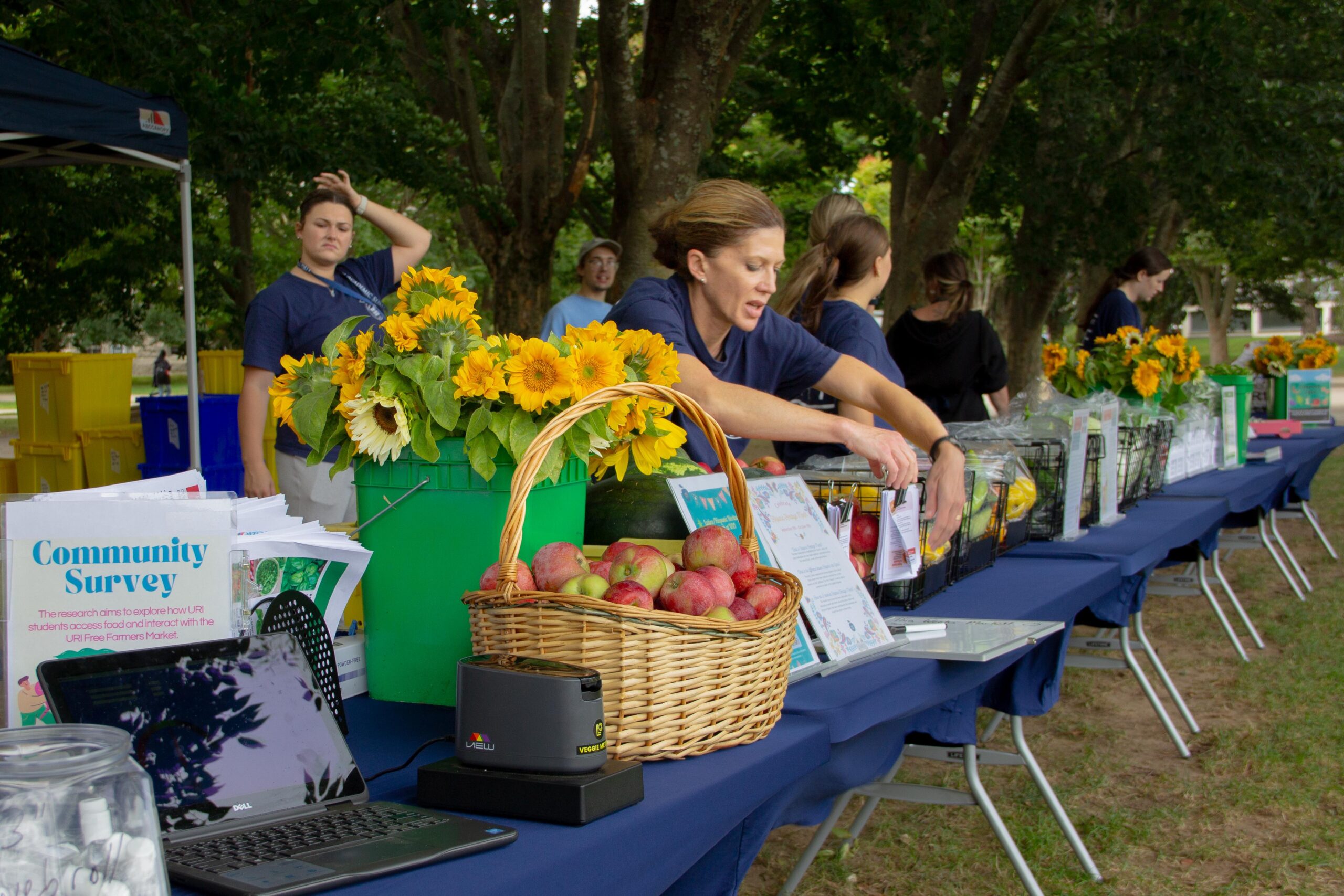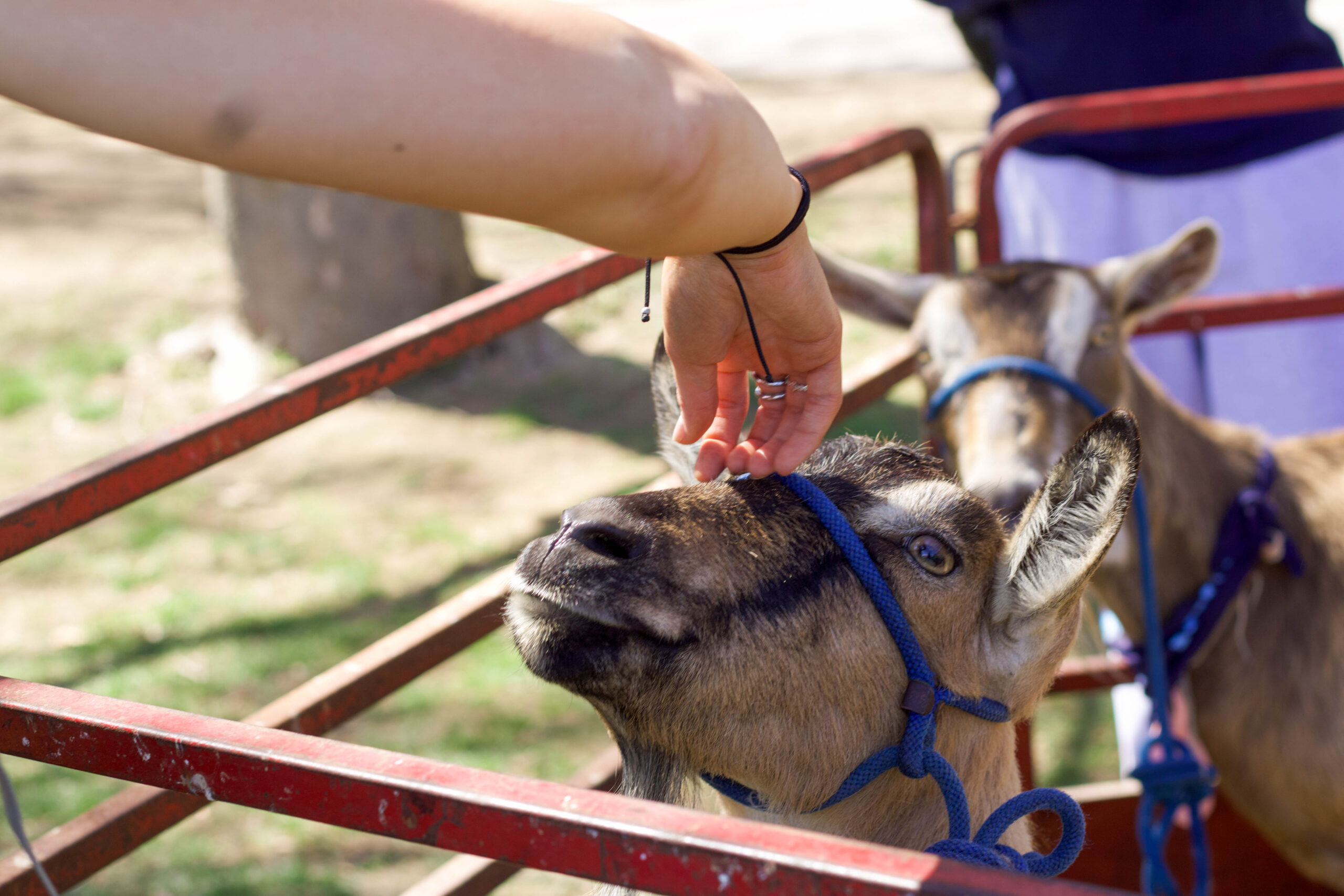Every Thursday at 11 a.m. since the first day of school, students have lined the sidewalks of the Quad at the University of Rhode Island to wait for fresh, locally grown produce from the URI Free Farmers’ Market.
The market started in order to use the excess food produced by the teaching farms and gardens at the Gardner Research Center on campus, said Amanda Missimer, a clinical assistant professor in the nutrition department and the market’s co-coordinator.
Since 2021, the URI Free Farmers’ Market has provided weekly produce bags to students during the month of September. The bags contain roughly 1,600 calories worth of essential nutrients, designed to last a student until the next week, Missimer said. All the food is grown and harvested on campus at the Gardner Research Center’s Agronomy Farm.
The market is a part of a larger project to research and tackle food insecurity on college campuses, Missimer said.
“We know that college students in general are struggling,” Missimer said. “That is coupled with the fact that where we live in Kingston, we don’t have a walkable grocery store, we don’t have really walkable anything other than like our small bodegas on campus. So it’s really a food insecurity issue, a food access issue and a food excess issue.”
Since the first market in 2021, the market has distributed 17,000 pounds of produce to over 3,000 students, according to data collected by Missimer’s team. Of the over 800 students surveyed, over half were off-campus students, and 70% of students screened at risk for food insecurity.
“Just come and try this stuff because it’s for free and you’re in college,” Missimer said. “This is the time to realize that you’re not living with your parents and family and you can really define yourself as an eater.”
However, the market isn’t just to provide students with free and local produce. It also provides valuable data on the URI student population’s vegetable consumption, Missimer said. Before a student can go down the line of tables and pick out their vegetables, they meet Macey Higgins, the market’s research manager, and a third-year double major in sustainable food systems and plant sciences.
Students are asked to scan their student ID, sanitize their hands and place their index finger into a device the size of a pencil sharpener, affectionately named the veggie meter by Missimer and Higgins.
“It’s measuring your carotenoid levels which are pigment cells under your skin,” Higgins said. “They are found in all types of plants [but] we’re looking mainly at fruits and vegetables.”
A small screen behind the veggie meter displays a dial, ranging from zero to 800. A score of zero means no carotenoids and 800 means maximum level of carotenoids. The average score, according to Missimer, falls around 250. The scores provide an estimate of carotenoids levels for the last three months, Missimer said.
Carotenoids are fat soluble, and therefore are present in the pads of our fingers, according to Missimer. Instead of pricking the finger, the veggie meter uses light to measure the number of carotenoids in the finger pad. A higher score on the veggie meter means a high level of carotenoids in the skin, correlating to a higher intake of fruits and vegetables.
“We want to see if repeat visits to the farmers’ market improves any of these markers, including the carotenoid score,” Missimer said.
The data collected by the veggie meter over the course of the five-week market will be used in a quantitative paper awaiting to be submitted for peer-reviewed publication, Missimer said.
While the veggie meter is a scientific instrument, it is also a fun activity for farmers’ market goers, and helps students understand the importance of the produce they are getting, Higgins said.
“People get really excited,” Higgins said. “A lot of people come back each week to see if their scores improve.”
By the market’s third week, over 470 students had been tested by the veggie meter, according to Higgins’ records.
Julia Cerveira-Bianchi, a graduate student, has been coming to the market every week since it opened, not only to get her fresh produce, but also to improve her veggie meter score.
“I’m very invested in it right now,” Cerveira-Bianchi said. “My current score is at 375.”
Cerveira-Bianchi, who is already focused on her fruit and vegetable consumption, said that getting a higher score is an incentive to come back to the market every Thursday.
Missimer hopes that the market not only makes produce more affordable to students, but also helps them expand their culinary horizons.
“If you have had mushy broccoli your whole life, I want to help open your eyes to roasting it with garlic and lemon and find out that it can actually be amazing,” Missimer said.





